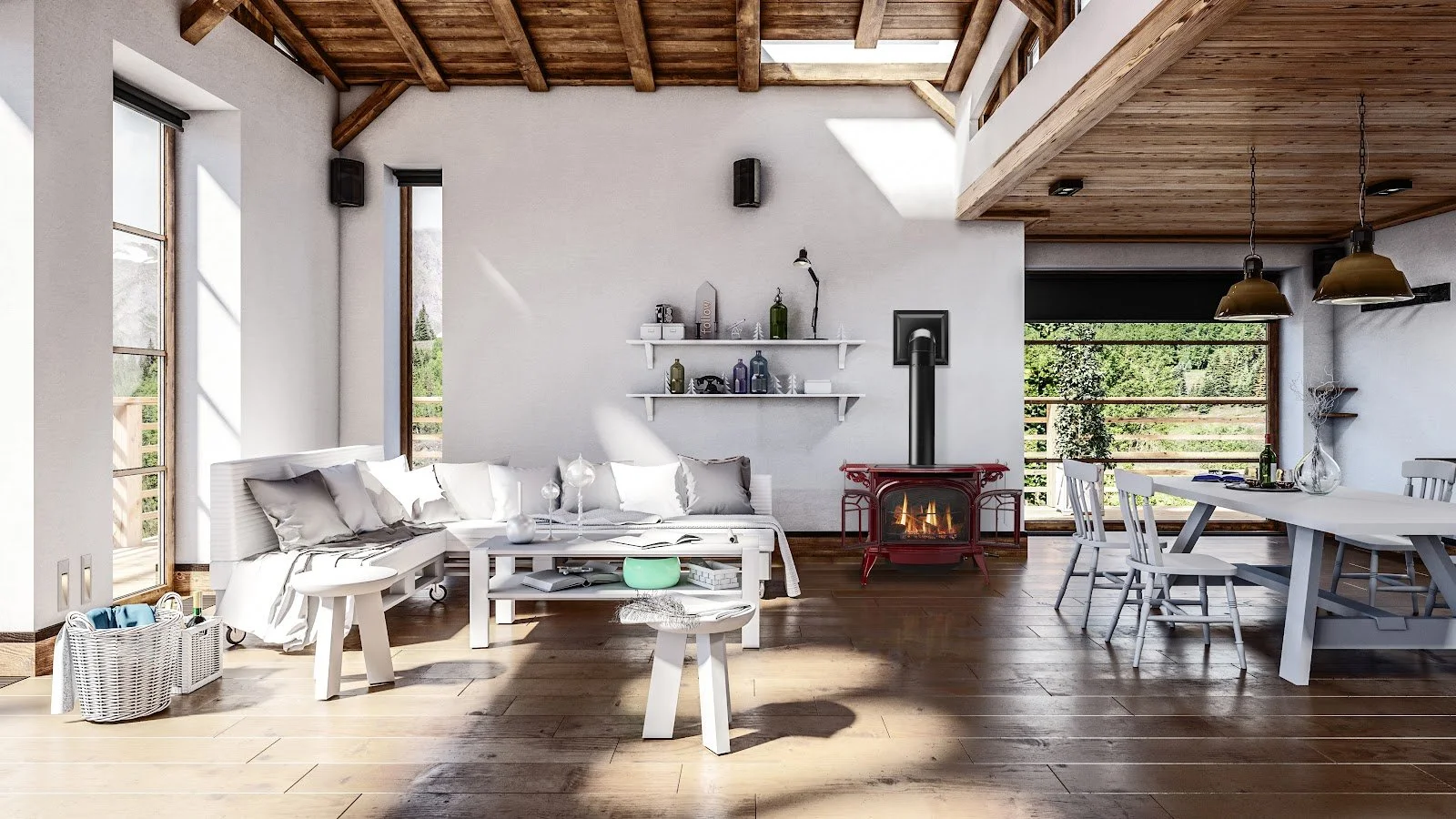Gas, Wood, Pellet, Electric…Which Fireplace or Stove is Right for You?
People love the look, feel and ambiance a warm fire provides. And with all the uncertainties and challenges 2020 has brought, people are spending more time at home and want to increase their comfort.
If you have an existing, wood burning fireplace that is outdated, messy to use and doesn’t heat your home well, installing an insert can transform the look of your existing fireplace and deliver efficient warmth and ambiance with the touch of a remote.
Remodeling or building a new home is the perfect time to install a gas fireplace. They come in a variety of sizes, styles and features and are usually the focal point of a room.
For a more traditional look and feel, gas, wood and pellet stoves are a great option. They can even be installed in homes without access to natural gas or electricity.
Lastly, electric fireplaces provide easy to install, plug and play ambiance for homeowners who aren’t concerned about heating or realistic flame requirements.
Wood-Burning Stoves
Wood burning stoves provide the romantic crackling fireplace look and feel but do require more maintenance efforts than a gas burning stove, fireplace or insert.
Pros:
Wood burning stoves provide unrivaled authenticity of a wood-burning smell and look that elicits the warm, magical feel of old-fashioned days past.
Cons:
A chimney is necessary and it requires regular cleaning and maintenance to prevent soot build up which can be flammable.
Each gorgeous fire comes with post-fire ash clean-up needs.
Wood-burning fireplaces don’t efficiently heat homes. The majority of heat they produce travels right back up that mandatory chimney.
Pellet Stoves & Inserts
Pellet stoves and inserts look like a traditional fireplace or stove with flickering flames. However, they burn higher efficiency (low moisture) pellets instead of wood.
Pros:
Wood pellets burn cleanly and efficiently (highest efficiency option).
Pellet stoves offer relatively good warmth.
Ash pans at the bottom of the stove make cleanup easier.
Pellet stoves can be installed on most exposed walls, giving homeowners tremendous flexibility for install.
Cons:
Pellets are sold in large, heavy bags that require ample, dry storage space.
Ash clean-up after each burning session is required.
Requires weekly maintenance to ensure the firepot is cleaned and maintained.
Gas Stoves, Inserts and Fireplaces
Gas inserts and fireplaces offer beauty, warmth and ambiance with the push of a button. The ease of no-mess, no-chimney required, efficient, direct heating capabilities makes this a very attractive option. A gas insert can be installed into an existing fireplace and chimney whereas a gas fireplace or freestanding stove is a great option to install in any room with access to an outside wall (for ventilation). They come in a wide variety of styles varying from ultra modern to very traditional styles.
Pros:
Offers direct heating with remote control flame height, ceramic log lighting and fan blower control options; no kindling or lighting required.
Higher efficiency heating than wood burning options.
All components are enclosed in a burn chamber behind a sealed piece of glass – no post burn ash clean up.
If you don’t have an existing fireplace to install an insert into, and don’t want to remodel an existing wall, you can install a free-standing gas stove.
If you want the visual ambiance of a crackling fire without the heat, some models come with venting options to exhaust the heat out.
Electric ignition models either come standard or can be retrofit with a backup battery system to operate when the electricity is out.
Cons:
For some homeowners, natural gas is not available in their area so they need to install an outdoor propane tank if they want a gas heating option.
Some people are concerned it’s not a “real fire” but modern ceramic log-sets are very realistic looking now.
Electric
If you are just interested in ambiance without the need for heat, an electric fireplace is an option to consider.
Pros:
Minimal installation requirements.
No wood, pellets or gas required.
Cons:
When power outages occur, the fireplace will not work.
Minimal heating which can be a disappointment when the weather is cold and people expect the fireplace to generate warmth.
Electricity costs can be expensive if running the appliance frequently.
Least realistic-looking option.











